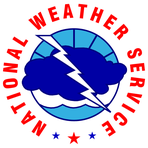Tornadoes and the Tipping Point: A Stormy Future for America
May 22, 2025, 7:05 am
Tornadoes are like nature’s wild card. They strike suddenly, leaving chaos in their wake. The recent surge in tornado activity across the United States has raised alarms. With 883 local tornado reports this year alone, that’s a staggering 35% increase compared to the average. As the storms intensify, the resources to predict and respond to them dwindle. This is a dangerous mix.
The National Weather Service (NWS) is feeling the strain. Staff shortages are becoming critical. Many offices are operating with vacancy rates above 20%. In some areas, like Jackson, Mississippi, the rate is as high as 25%. This is not just a statistic; it’s a ticking time bomb. Fewer meteorologists mean less capacity to analyze data and issue timely warnings. The pressure is mounting.
Meteorologists describe the situation as a boat with leaks. You can patch it up for a while, but eventually, it sinks. The NWS is doing its best to stay afloat, but the workload is overwhelming. Employees are working 80 to 120 hours a week. Fatigue is setting in. A tired meteorologist is a dangerous one. When the radar shows a storm, they need to be sharp. But how can they be when they’re running on empty?
The technology to predict tornadoes has improved. Advanced radar systems can detect storms with remarkable accuracy. Yet, technology cannot replace human intuition and experience. A well-rested staff is essential for interpreting data and communicating risks to the public. The balance is delicate. As staff numbers dwindle, the quality of forecasts may suffer.
Budget cuts have compounded the problem. Fewer weather balloon launches mean less data for forecasts. Training for local disaster officials has also been curtailed. This lack of preparation is a recipe for disaster. When storms hit, communities need to know how to respond. Without proper training, the risks multiply.
The climate is changing, and so are the patterns of tornado activity. Tornadoes are now forming in months that were once too cold for such storms. This shift is alarming. The atmosphere is becoming more volatile. Warmer Gulf waters fuel stronger storms. The collision of warm, moist air with cold fronts creates the perfect conditions for tornadoes. As temperatures rise, so does the potential for destruction.
The connection between climate change and tornadoes is complex. While we understand how climate change drives heavy rainfall and heat waves, tornadoes remain less understood. Some days, the atmosphere is supercharged, leading to violent storms. Other days, conditions are less favorable. This unpredictability makes forecasting even more challenging.
More people are living in harm’s way. Urban sprawl has pushed communities into areas prone to tornadoes. As populations grow, so do the risks. When a tornado strikes, the consequences are dire. Homes are destroyed, lives are lost. The recent storms in Kentucky claimed at least 14 lives. This is not just a statistic; it’s a tragedy.
The aftermath of these storms is heart-wrenching. Rescuers search for survivors amid the rubble. Emergency shelters spring up, filled with those who have lost everything. Donations pour in, but the scars remain. The emotional toll is immense. Survivors recount the terror of the storm. They describe the vibrations, the sounds of destruction. It’s a surreal experience that changes lives forever.
The storms are not confined to one region. They sweep across states, leaving devastation in their path. Missouri, Virginia, and Kentucky have all felt the wrath of severe weather. The recent system that struck Kentucky also killed seven in Missouri. The impact is widespread. Communities are left to pick up the pieces.
As tornadoes become more frequent, the need for a robust response system grows. The NWS must adapt. They need more staff, better training, and increased funding. Without these, the risks will only escalate. When the next storm hits, will we be ready?
The stakes are high. Lives depend on accurate forecasts and timely warnings. The NWS is at a crossroads. They can either continue to patch the leaks or invest in a sustainable future. The choice is clear. We must prioritize our safety. The storms are coming, and we need to be prepared.
In conclusion, the combination of more tornadoes and fewer meteorologists is a dangerous cocktail. The weather service is stretched thin, and the consequences could be catastrophic. As climate change reshapes our weather patterns, we must respond with urgency. The time to act is now. We owe it to ourselves and future generations to ensure that when the storms come, we are ready to face them head-on. The winds of change are blowing, and we must not be caught off guard.
The National Weather Service (NWS) is feeling the strain. Staff shortages are becoming critical. Many offices are operating with vacancy rates above 20%. In some areas, like Jackson, Mississippi, the rate is as high as 25%. This is not just a statistic; it’s a ticking time bomb. Fewer meteorologists mean less capacity to analyze data and issue timely warnings. The pressure is mounting.
Meteorologists describe the situation as a boat with leaks. You can patch it up for a while, but eventually, it sinks. The NWS is doing its best to stay afloat, but the workload is overwhelming. Employees are working 80 to 120 hours a week. Fatigue is setting in. A tired meteorologist is a dangerous one. When the radar shows a storm, they need to be sharp. But how can they be when they’re running on empty?
The technology to predict tornadoes has improved. Advanced radar systems can detect storms with remarkable accuracy. Yet, technology cannot replace human intuition and experience. A well-rested staff is essential for interpreting data and communicating risks to the public. The balance is delicate. As staff numbers dwindle, the quality of forecasts may suffer.
Budget cuts have compounded the problem. Fewer weather balloon launches mean less data for forecasts. Training for local disaster officials has also been curtailed. This lack of preparation is a recipe for disaster. When storms hit, communities need to know how to respond. Without proper training, the risks multiply.
The climate is changing, and so are the patterns of tornado activity. Tornadoes are now forming in months that were once too cold for such storms. This shift is alarming. The atmosphere is becoming more volatile. Warmer Gulf waters fuel stronger storms. The collision of warm, moist air with cold fronts creates the perfect conditions for tornadoes. As temperatures rise, so does the potential for destruction.
The connection between climate change and tornadoes is complex. While we understand how climate change drives heavy rainfall and heat waves, tornadoes remain less understood. Some days, the atmosphere is supercharged, leading to violent storms. Other days, conditions are less favorable. This unpredictability makes forecasting even more challenging.
More people are living in harm’s way. Urban sprawl has pushed communities into areas prone to tornadoes. As populations grow, so do the risks. When a tornado strikes, the consequences are dire. Homes are destroyed, lives are lost. The recent storms in Kentucky claimed at least 14 lives. This is not just a statistic; it’s a tragedy.
The aftermath of these storms is heart-wrenching. Rescuers search for survivors amid the rubble. Emergency shelters spring up, filled with those who have lost everything. Donations pour in, but the scars remain. The emotional toll is immense. Survivors recount the terror of the storm. They describe the vibrations, the sounds of destruction. It’s a surreal experience that changes lives forever.
The storms are not confined to one region. They sweep across states, leaving devastation in their path. Missouri, Virginia, and Kentucky have all felt the wrath of severe weather. The recent system that struck Kentucky also killed seven in Missouri. The impact is widespread. Communities are left to pick up the pieces.
As tornadoes become more frequent, the need for a robust response system grows. The NWS must adapt. They need more staff, better training, and increased funding. Without these, the risks will only escalate. When the next storm hits, will we be ready?
The stakes are high. Lives depend on accurate forecasts and timely warnings. The NWS is at a crossroads. They can either continue to patch the leaks or invest in a sustainable future. The choice is clear. We must prioritize our safety. The storms are coming, and we need to be prepared.
In conclusion, the combination of more tornadoes and fewer meteorologists is a dangerous cocktail. The weather service is stretched thin, and the consequences could be catastrophic. As climate change reshapes our weather patterns, we must respond with urgency. The time to act is now. We owe it to ourselves and future generations to ensure that when the storms come, we are ready to face them head-on. The winds of change are blowing, and we must not be caught off guard.

